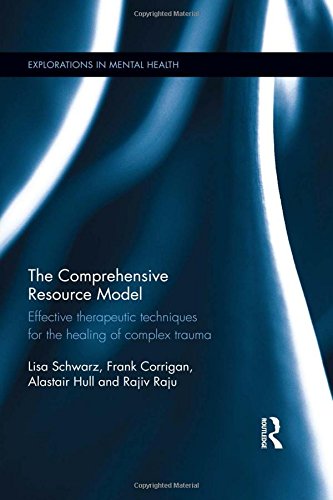

Most ebook files are in PDF format, so you can easily read them using various software such as Foxit Reader or directly on the Google Chrome browser.
Some ebook files are released by publishers in other formats such as .awz, .mobi, .epub, .fb2, etc. You may need to install specific software to read these formats on mobile/PC, such as Calibre.
Please read the tutorial at this link: https://ebookbell.com/faq
We offer FREE conversion to the popular formats you request; however, this may take some time. Therefore, right after payment, please email us, and we will try to provide the service as quickly as possible.
For some exceptional file formats or broken links (if any), please refrain from opening any disputes. Instead, email us first, and we will try to assist within a maximum of 6 hours.
EbookBell Team

4.4
12 reviewsTraditional methods employed in psychotherapy have limited effectiveness when it comes to healing the psychological effects of trauma, in particular, complex trauma. While a client may seem to make significant breakthroughs in understanding their feelings and experiences on a rational level by talking with a therapist, this will make no difference to their post-traumatic symptoms if the midbrain is unable to modulate its activity in response. The Comprehensive Resource Model argues for a novel therapeutic approach, which uniquely bridges neuroscience and spirituality through a combination of somatic therapy, traditional psychotherapy, and indigenous healing concepts to provide effective relief to survivors of trauma.
The Comprehensive Resource Model was developed in response to the need for a streamlined, integrative therapeutic model; one which engages a scaffolding of neurobiological resources in many brain structures simultaneously in order for clients to be fully embodied and conscious in the present moment while processing their traumatic material. All three phases of trauma therapy: resourcing, processing, and integration are done simultaneously. Demonstrating a nested model and employing brain and body-based physiological safety as the foundation of healing, chapters describe three primary categories of targeted processing: implicit and explicit survival terror, ‘Little T Truths’, and ‘Big T Truths’, all of which contribute to thorough healing of complex trauma and an expansion into higher states of consciousness and embodiment of the essential core self.
This book describes the development and benefits of this pioneering new approach to trauma therapy. As such, it will be of key interest to academics, researchers and postgraduate students in the fields of psychiatry, psychotherapy, psychology and trauma studies. It will also appeal to practising therapists, psychiatrists, psychologists, psychiatric nurses, and to others involved in the treatment or management